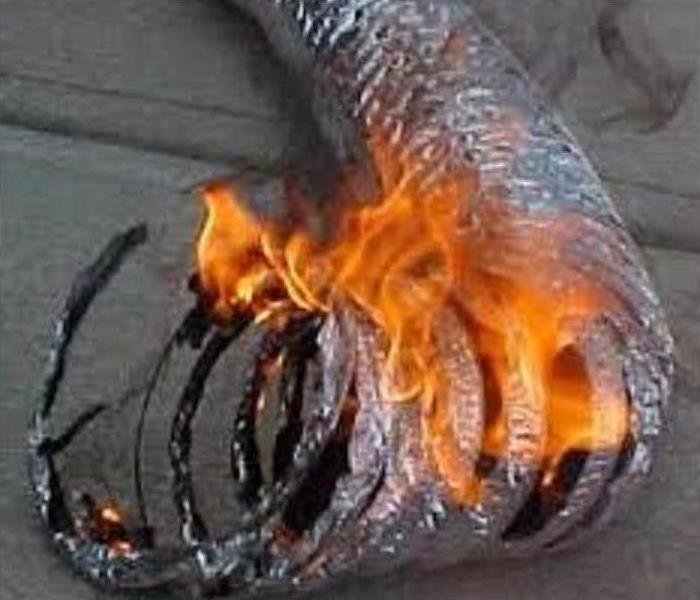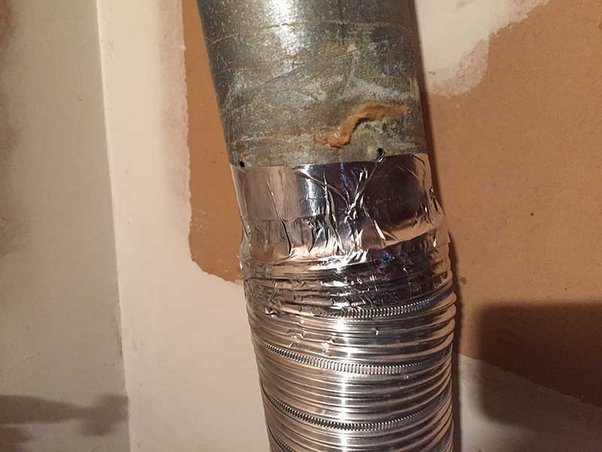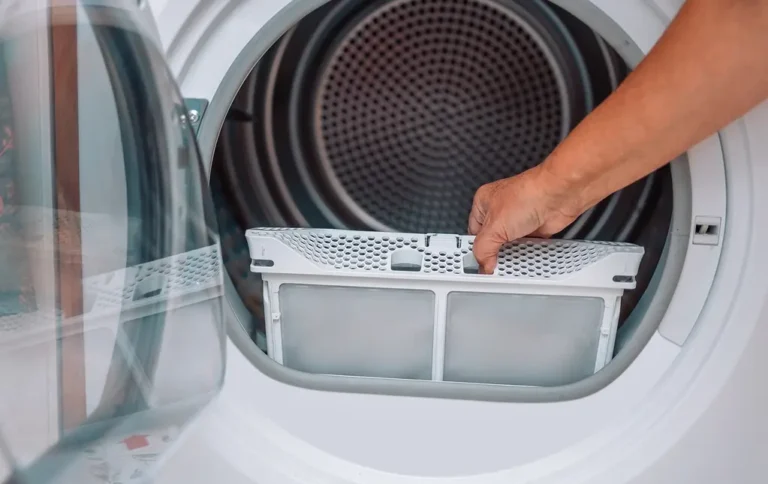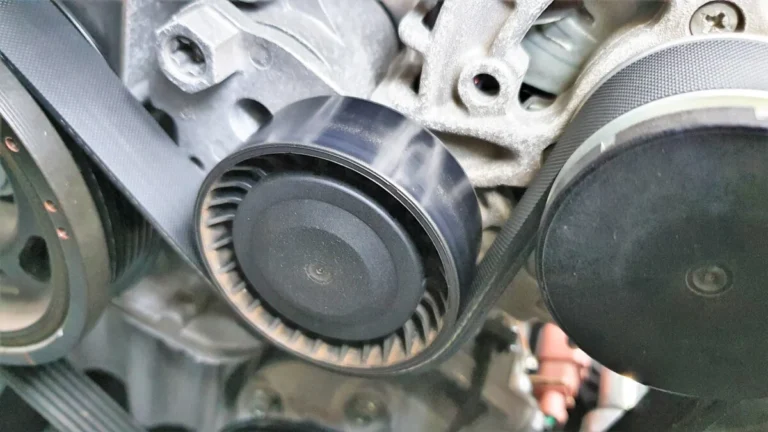How Hot Does a Dryer Vent Get?
Dryer vents are a crucial but often overlooked component of our homes. While we depend on them to dry our clothes efficiently, it’s essential to understand how hot a dryer vent can get. Neglecting this can lead to various problems, including the risk of house fires. In this article, we’ll delve into the temperature ranges of dryer vents, why it matters and how hot does a dryer vent get, also how to keep them safe and functional.
Key Takeaways
Before we dive into the details, here are the key takeaways:
- Dryer vents can reach temperatures between 125-160 degrees Fahrenheit.
- It is normal for a dryer vent to be hot to the touch, but extreme temperatures can be problematic.
- Overheating dryers are often caused by lint buildup and blockages.
- Regular deep cleaning of your dryer and its vent tubes is crucial to maintain safety.
- Several dryer cleaning kits are available to make maintenance easier.
Why Dryer Vent Temperature Matters?
The temperature of a dryer vent is a critical factor in ensuring its safe operation. Understanding the temperature ranges involved can help prevent accidents and ensure your appliance’s longevity.
How much is the Dryer Drum Temperature?
The air inside the dryer drum can reach temperatures of around 175-190 degrees Fahrenheit during the drying cycle. This high temperature is necessary to remove moisture from your clothes effectively.
How much is the Dryer Vent Temperature?
The air coming out of the dryer vent typically ranges from 125-160 degrees Fahrenheit. While this is notably cooler than the temperature inside the drum, it’s still hot enough to pose risks if not handled properly.
How Hot Does a Dryer Vent Get?
The temperature of a dryer vent can vary, but it typically reaches temperatures between 125°F to 165°F (52°C to 74°C) during a typical drying cycle. This temperature range is necessary to effectively dry your clothes. The heat generated in the dryer is used to evaporate moisture from your laundry.
Is it Normal for a Dryer Vent to be Hot?
A certain degree of heat from the dryer vent is normal, given the nature of its function. The standard temperature range for a well-functioning dryer vent is around 120-160 degrees Fahrenheit. This heat is generated as the dryer expels hot, moist air and serves a purpose in the drying process.
However, it’s essential to monitor your dryer vent’s temperature. If it consistently exceeds 160 degrees Fahrenheit, it could indicate a problem that needs attention.
what are the Potential Consequences of Extreme Temperatures?
When a dryer vent gets too hot, it can lead to a range of issues:
- Fire Hazard: Excessive heat can ignite lint or dust buildup within the vent, posing a significant fire risk. This is why it’s crucial to maintain your dryer vents.
- Reduced Appliance Lifespan: Prolonged exposure to high temperatures can also damage the dryer’s internal components, leading to costly repairs or replacements.

Can a Dryer Vent be Hot to the Touch?
Yes, a dryer vent can be hot to the touch, especially when it’s in operation. However, it should not be scalding. It’s normal for the exterior surface of the vent to become warm due to the hot air being expelled, but it should not reach a point where it’s painful to touch.
Maintaining your dryer and its vent is the key to ensuring that the exterior temperature remains safe. Regular cleaning and maintenance help prevent blockages and reduce the risk of overheating.
Why Would a Dryer Get Too Hot?
Several factors can cause a dryer to overheat, and many of them are preventable. Here are some common reasons:
- Lint Buildup: The accumulation of lint in the dryer vent is a leading cause of overheating. Lint is highly flammable, and when it clogs the vent, it restricts airflow and can catch fire.
- Blocked Vent: Anything that blocks the vent, such as debris or bird nests, can disrupt airflow, causing the appliance to overheat.
- Faulty Thermostat: A malfunctioning thermostat may fail to regulate the dryer’s temperature, causing it to run too hot.
- Improper Vent Installation: If the vent duct is too long, contains too many bends, or is made from the wrong materials, it can impede airflow and lead to overheating. Check can you use duct tape on a dryer vent guide.
How to Deep Clean Your Dryer?
Preventing your dryer from overheating and maintaining its efficiency is a matter of regular cleaning and maintenance. Here’s a step-by-step guide on how to deep clean different types of dryers:
Gas Dryer
- Safety First: Turn off the gas supply and unplug the dryer.
- Remove Lint Screen: Take out the lint screen and clean it.
- Access the Dryer Interior: Open the top or front panel to access the interior.
- Vacuum and Wipe: Use a vacuum and a damp cloth to clean the interior, including the drum.
- Clean the Vent Tube: Detach the vent tube and clean it thoroughly.
- Reassemble: Put everything back in place and reconnect the gas supply.
- Check Vent Exterior: Inspect the dryer vent’s exterior for blockages and clean if necessary.
Top-Loading and Side-Loading Dryers
- Safety First: Unplug the dryer.
- Clean Lint Screen: Remove and clean the lint screen.
- Access the Interior: Open the dryer’s top or front panel, depending on the model.
- Vacuum and Wipe: Clean the interior with a vacuum and a damp cloth.
- Clean Vent Tubes: Detach and clean the vent tubes.
- Reassemble: Put everything back in place.
Ductless and Ventless Dryers
- Safety First: Unplug the dryer.
- Clean Lint Screen: Remove and clean the lint screen.
- Interior Cleaning: Use a vacuum to clean the interior components.
- Vent Maintenance: Ensure that the ventless system is clear of debris and lint.
- Reassemble: Put everything back in place.
Read about how to vent a dryer without a vent to outside post.
Cleaning the Dryer Vent and Hose
Cleaning the dryer vent and hose is vital to maintain safe and efficient operation. Here’s how you can do it:
- Safety Precautions: Turn off the dryer, unplug it, and disconnect the vent from the wall.
- Remove Lint: Remove lint from the vent using a brush or a special lint brush kit.
- Clean the Hose: Clean the hose with a vacuum or a flexible brush.
- Reconnect and Secure: Reconnect the hose and secure it in place.
- Check the Exterior: Inspect the exterior vent for any obstructions and remove them.
The Best Dryer Cleaning Kits on the Market
To make your dryer maintenance easier, you can invest in specialized cleaning kits. Here are some popular options along with their pros and cons:
| Dryer Cleaning Kit | Pros | Cons |
|---|---|---|
| Deflecto Dryer Duct Cleaning Kit | – Effective cleaning tool. | – May not fit all dryer models. |
| Gardus RLE202 LintEater Rotary Dryer Vent Cleaning System | – Rotating brush for deep cleaning. | – Some users find it cumbersome. |
| Holikme Dryer Vent Cleaning Kit | – Affordable option. | – Brushes may not be as durable. |
| PetOde Dryer Vent Cleaner Kit | – Includes both brush and vacuum attachment. | – The vacuum may not fit all hoses. |
Final Thoughts
Taking care of your dryer and its vent system is more than just a maintenance chore; it’s a crucial safety measure. Neglecting this task can lead to fire hazards and costly repairs. By understanding the normal temperature range of your dryer vent, identifying potential issues, and maintaining it through regular cleaning, you can keep your home safe and your dryer working efficiently and know how hot does a dryer vent get.
In summary, remember these key points:
- Dryer vents can reach temperatures between 125-160 degrees Fahrenheit.
- Regular maintenance and cleaning are essential for safety.
- Overheating is often caused by lint buildup and blockages.
Don’t wait until it’s too late. Regularly clean and maintain your dryer to enjoy its benefits safely.
FAQ how hot does a dryer vent get
Does a Dryer Vent Get Hot Enough to Start a Fire?
Yes, a dryer vent can get hot enough to start a fire, especially when it’s clogged with lint or other debris. The high temperatures within the vent, combined with flammable materials like lint, create a fire hazard. Regular cleaning and maintenance are essential to prevent such incidents.
Are 90-Degree Dryer Vents Safe?
Dryer vents with 90-degree bends should be avoided if possible. They can impede airflow and increase the risk of lint buildup, potentially leading to overheating and fire hazards. It’s safer to use gradual bends and minimize the use of sharp angles in your vent system.
How Hot Does a Dryer Get on High?
The temperature inside a dryer on the high-heat setting can reach around 175-190 degrees Fahrenheit. This elevated temperature is necessary to effectively dry your clothes, but it’s important to ensure that the hot air is properly vented to prevent overheating and potential issues.
Can a Dryer Vent Touch Wood?
Dryer vents should not come into direct contact with wood or any combustible material. It’s essential to maintain a safe distance to prevent heat transfer and reduce the risk of fire. You can use heat-resistant materials and proper insulation to protect nearby wood surfaces.







